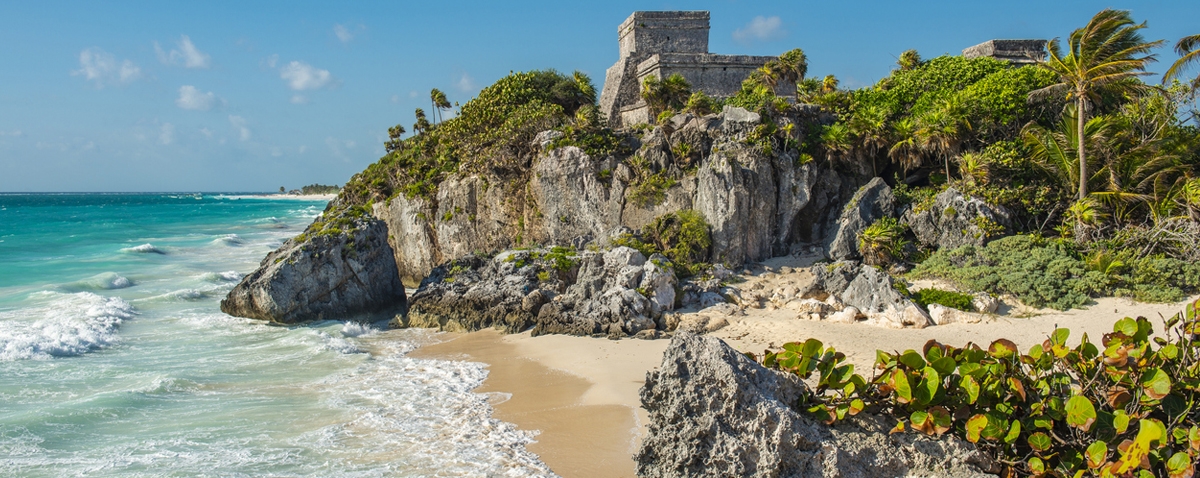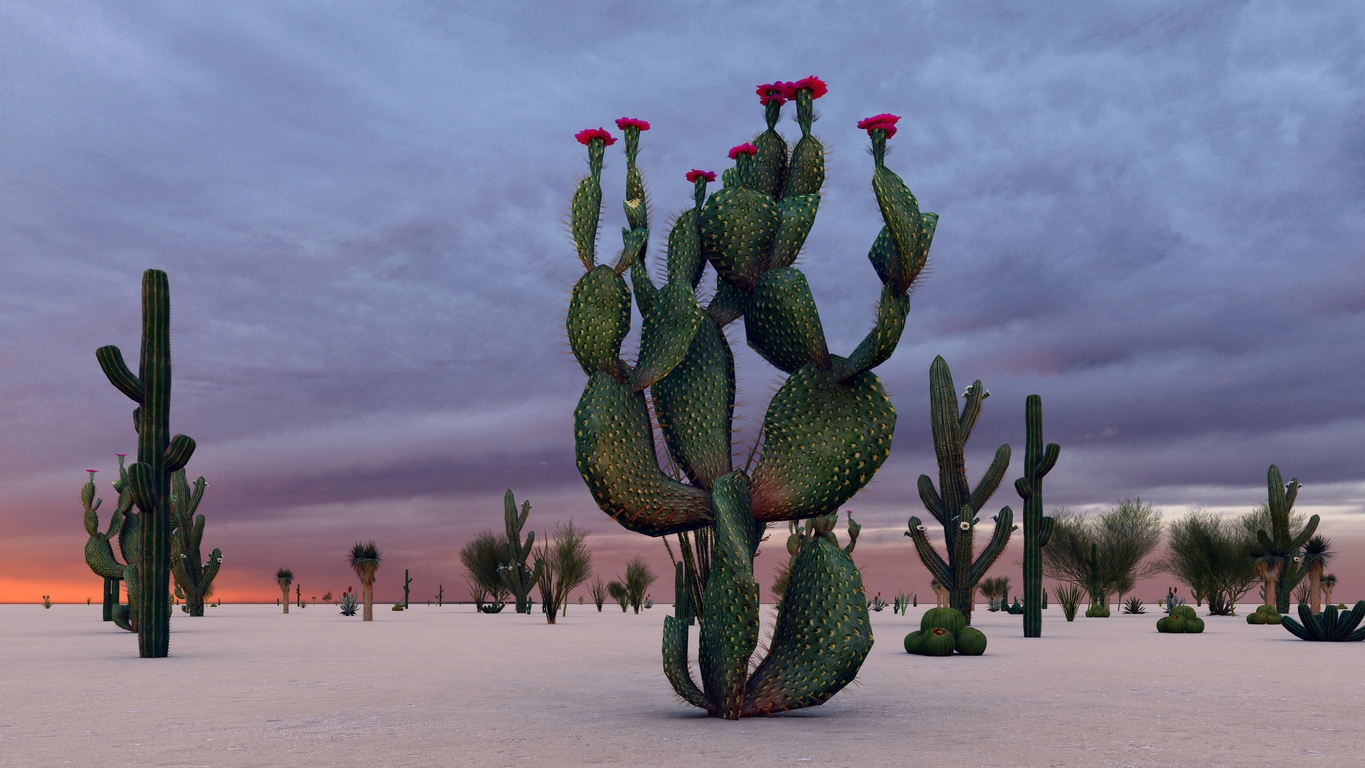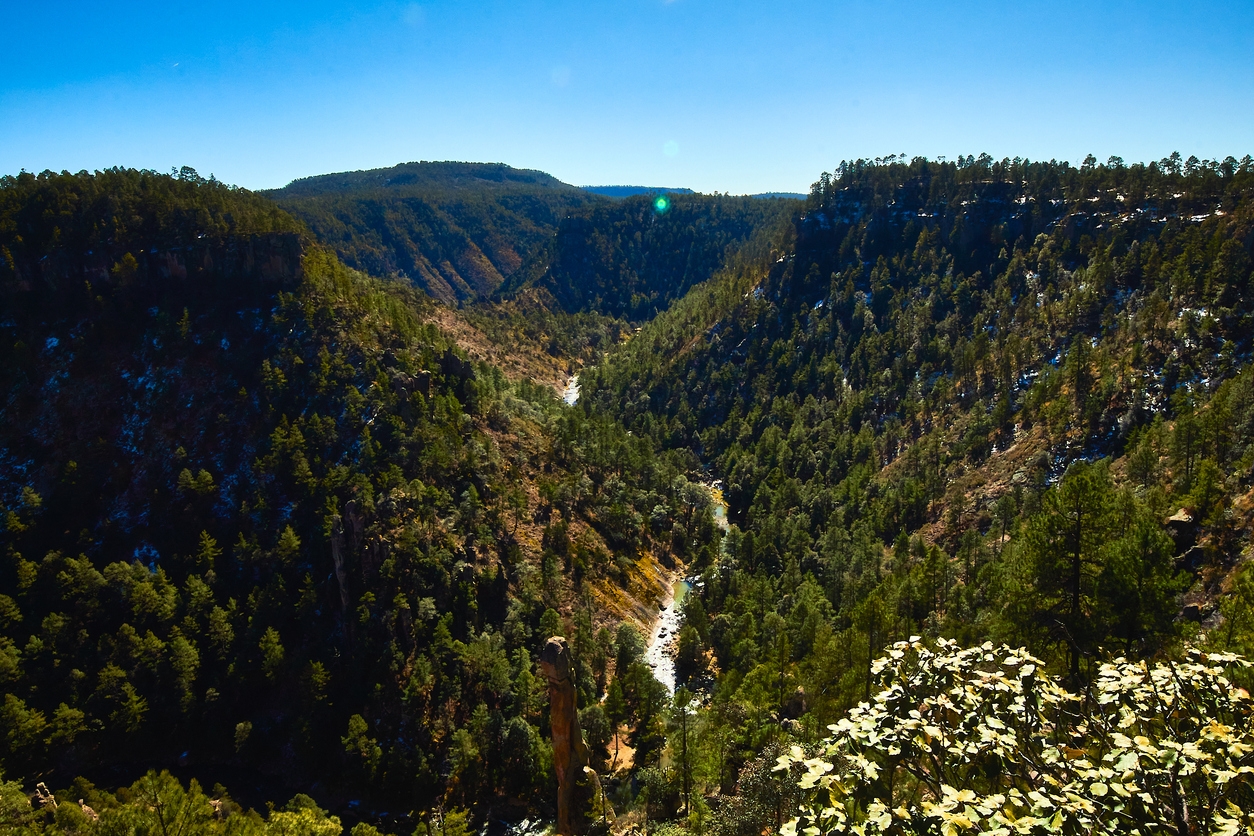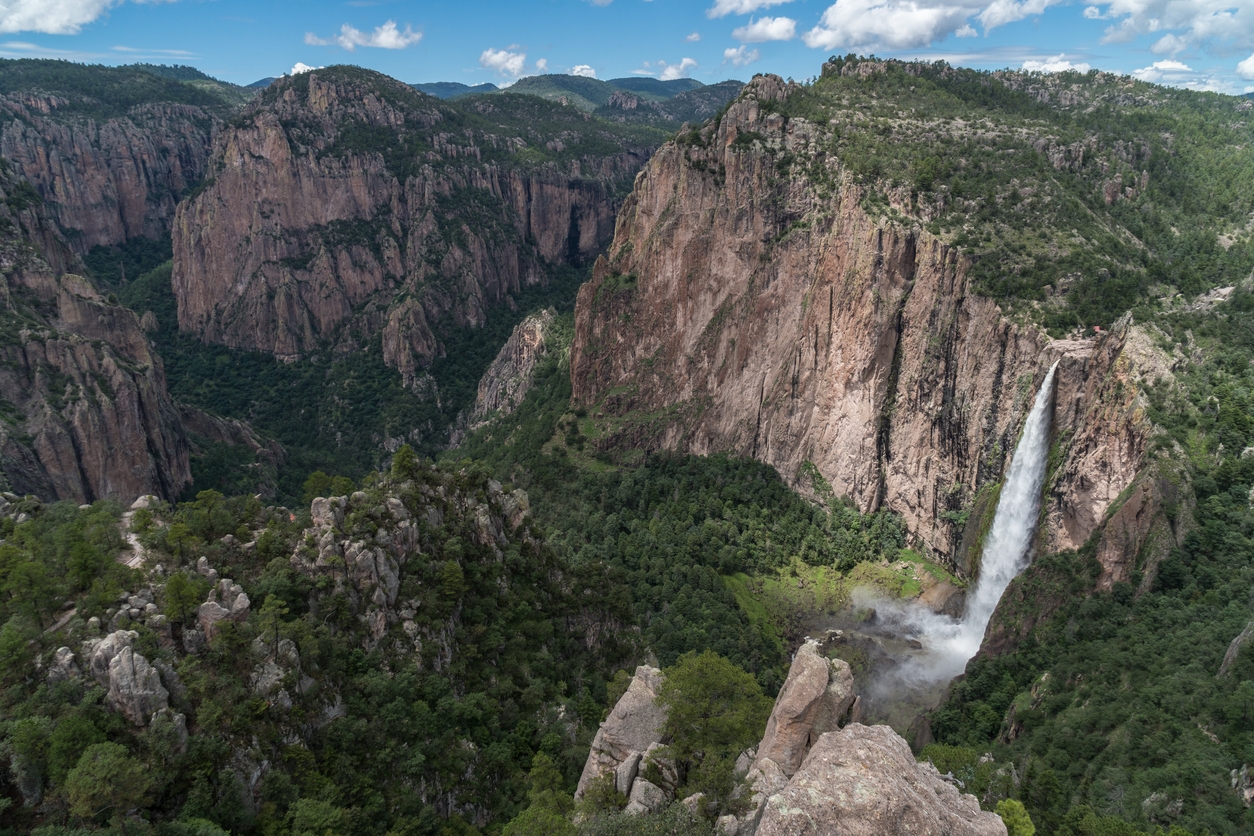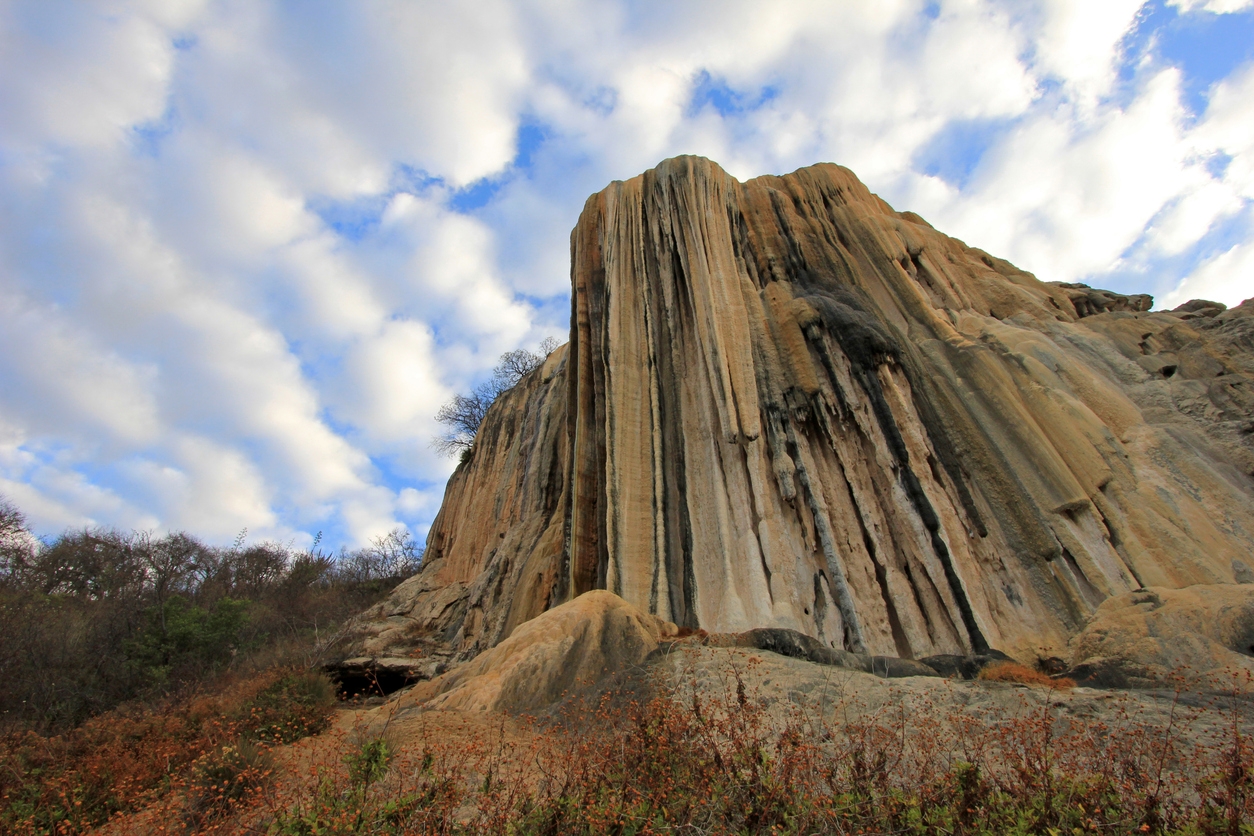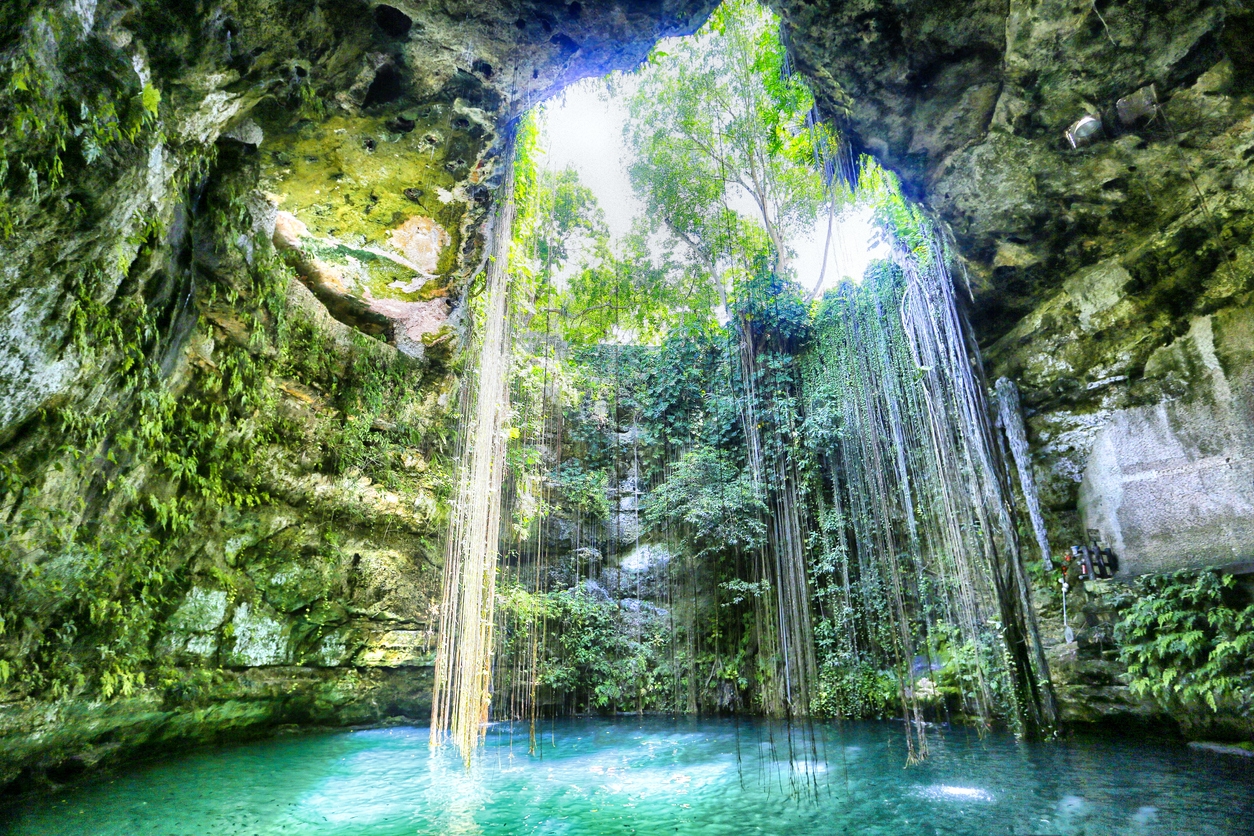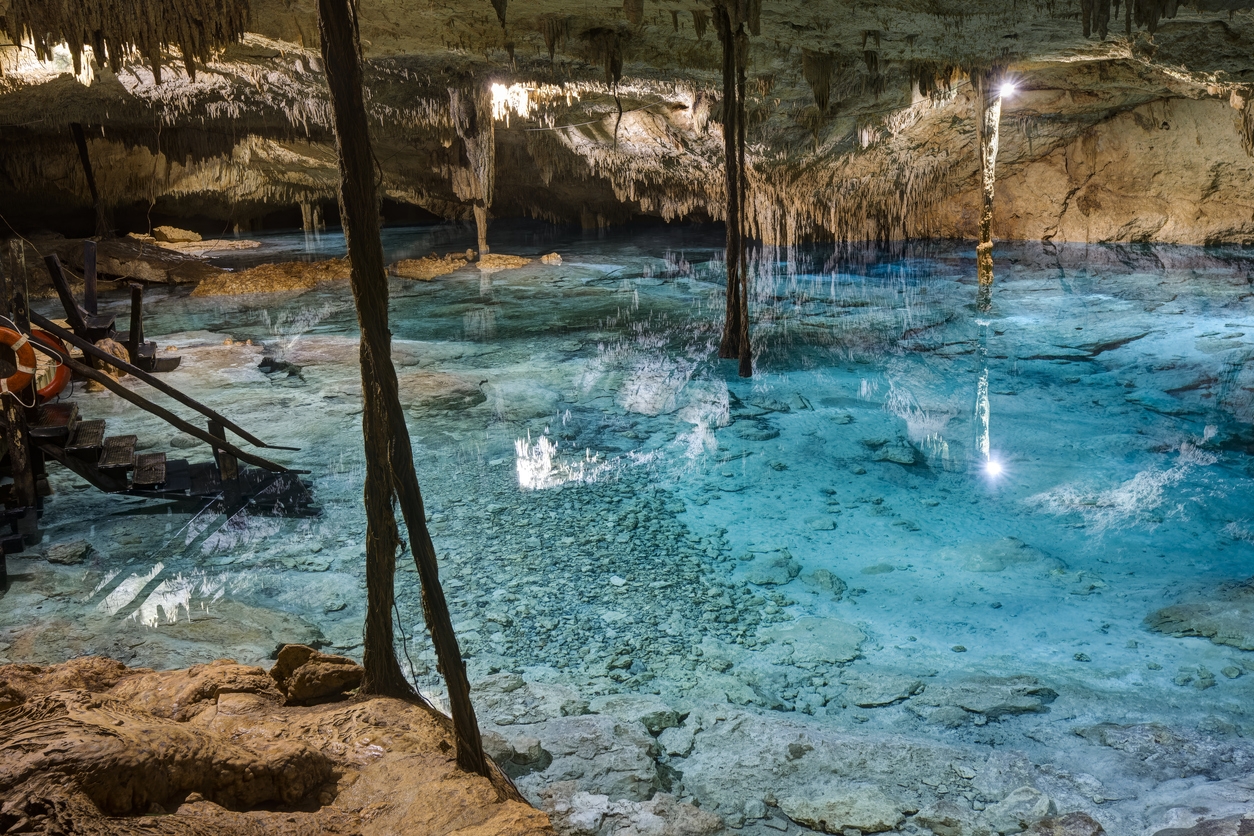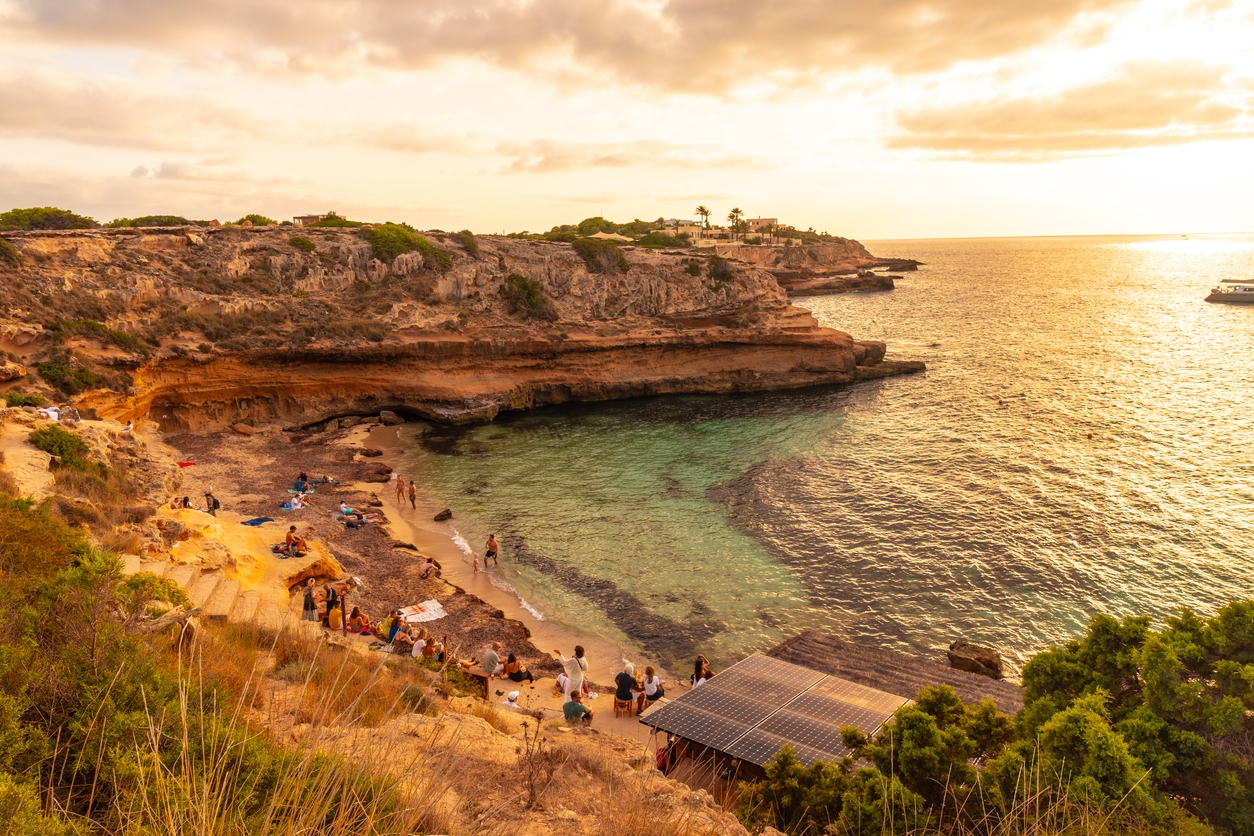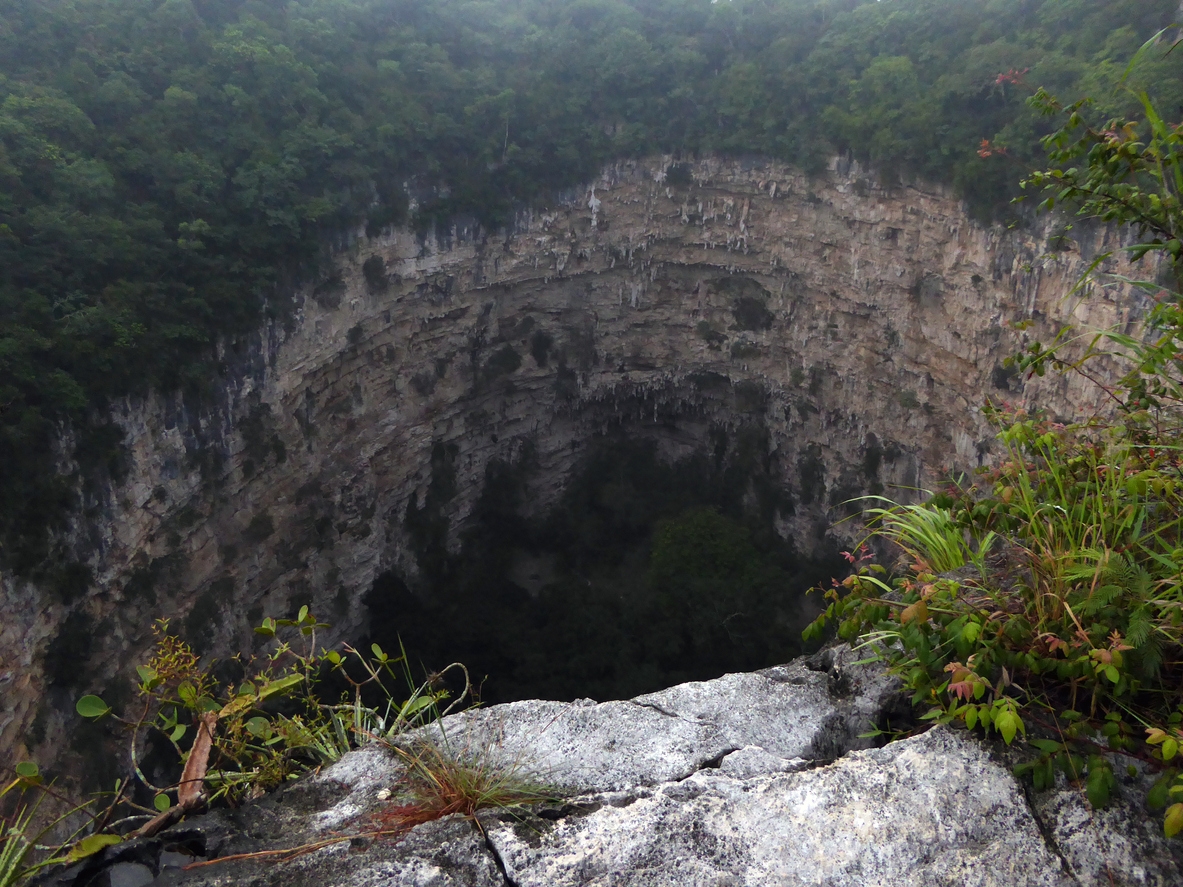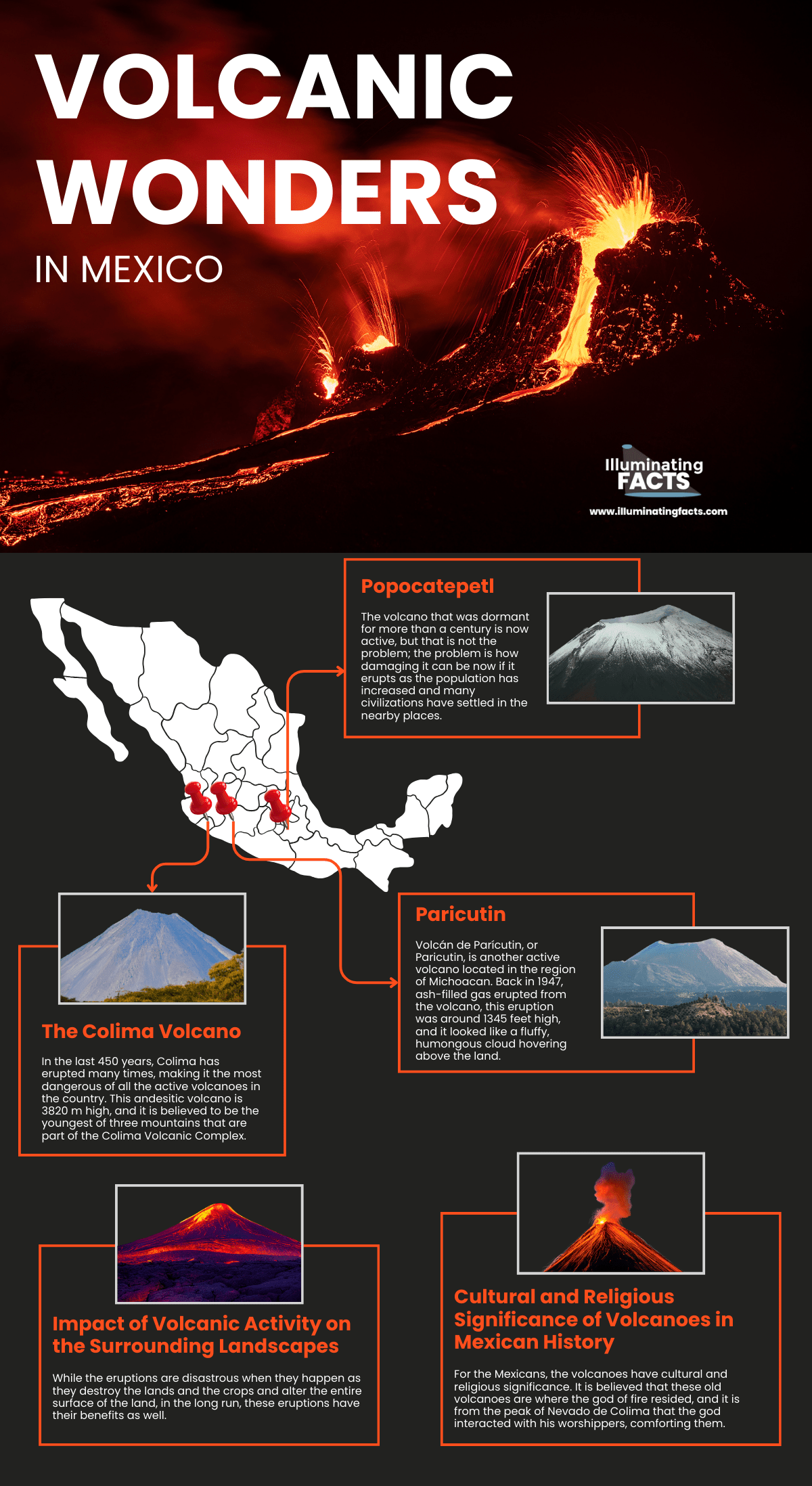Mexico is not just about delicious food and beautiful cultures, but the country is abundant in natural beauty, with lush green landscapes, enchanting valleys, and picturesque deserts.
The variety of seas and landscapes hold millions of species, making Mexico one of the most treasured destinations in terms of a rich ecosystem. For adventure seekers, Mexico is where one can immerse in nature, enjoy hearty meals and experience beautiful cultures simultaneously.
The Diverse Natural Beauty of Mexico
With luxurious crystal-clear beaches, powdery soft sand, and tall green palm trees, Mexico is heaven for beach lovers, but that is only some of what Mexico can offer. Its magnificent waterfalls, deep canyons, arid deserts, jungles with their rich biodiversity, and pristine rivers are equally captivating.
Such richness of natural beauty calls for conservation and respecting the natural wonders that Mexico owns. From oak forests to coniferous ones, cloud forests to grasslands, the terrestrial biodiversity offers many kinds of mammals, rodents, and amphibians. Fortunately, some regions like Baja California Sur and Espiritu Santo Island are well taken care of, conserving the biodiversity of the areas and ensuring the preservation of natural species.[1]
Natural Wonders of Mexico and Their Importance
It is a fact that Mexico is among the top countries in terms of biodiversity with more than 10 to 12% of the biodiversity of the world belonging to this region. Not only that, but Mexico is a haven for chocolate lovers, too, as cacao was first planted here by the Mayans and Aztec tribes and is still planted there.
The Breathtaking Landscapes
From the state of Chiapas to the mystical mountains and thick jungles, the beautiful city of San Cristobal de las Casas to the deep valley of Sumidero Canyon, one has much to explore and cherish when in Mexico. This unique landscape is naturally home to many species of birds, marine life, desert rodents and mammals, mangrove and estuaries species, coral reefs, and various reptiles.
The Majestic Mountains of the Sierra Madre Occidental and Oriental
The land of mountains and deserts, beaches and canyons, Mexico has a very peculiar yet scenic landscape with mountains and deep valleys in the center of the country. The Sierra Madre Oriental has most of the hills. This range of folded mountains is mainly located in the country’s northeastern region.[2] The formation of the ranges is around 60 million years old and is rich in metals like zinc, copper, and lead. Some of these limestone and shale peaks are as high as 12000 feet. One can find many ancient structures in these mountain ranges; these heritage structures belong to the Mayan civilization who once resided in these mountain ranges.
The Stunning Copper Canyon – Mexico’s Version of the Grand Canyon
Despite the fact that Barranca del Cobre, or the Copper Canyon, is seven times larger than the Grand Canyon, it is still compared with it, although not even their topography is the same. These canyons can be found in the northwest of Mexico and comprise 20 canyon series. Home to the Tarahumara people, these canyons provide a cultural as well as an adventurous experience to the tourists. Though it can be best experienced on the train, one also goes hiking, horse riding, trekking, and biking there. [3]
The Ethereal Beauty of the Hierve el Agua Petrified Waterfalls:
This rare kind of waterfall is also considered a very divine place. Situated to the southeast of Oaxaxa de Juarez, Hierve el Agua Petrified Waterfall is a unique experience in the mountain range. The weird thing about the waterfall is that it goes scorched during the dry season. The ancient waterfall was formed from a spring sprouting from the cliff. Agua Azul, or Blue Water as it is called, is due to its lovely blue color that is the result of the mineral-rich water.
Enchanting Cenotes and Underground Rivers
Have you ever wondered how underground water bodies are formed? Well, sinkholes are formed whenever the bedrock of limestones crashes. These crystal-clear water bodies remain clean because they have been shadowed by the bedrock for years. Mexico has an abundance of these sinkholes or cenotes; some very common are the famous Chechen Itza, some found in Yucatan Peninsula, and those in Kantun-Chi in the Riviera Maya. The Mexican word cenote has its origin in the Mayan language, in which cenote means a well.
The Mystical Appeal of Cenotes for Both, Locals and Tourists
Cenotes are not just sinkholes; they are considered sacred spaces which provide a way to the underworld, the Xibalba. Mayans believed these sinkholes were dwellings for the Chaac, who was the rain god. They even believed that Chaac Mool reincarnated into a jaguar. In order to dampen the anger of Chaac, the tribe performed religious rituals inside the cenotes by offering multiple artifacts to the rain god.
Pristine Beaches and Coastlines
Who wouldn’t visit the beautiful deep blue beaches of Mexico when planning a vacation there, everyone would! If you plan to go exclusively to the sea, Mexico has numerous beaches and seascapes that can serve those the languid kinds who like to relax and forget the world or the adventurous souls who live for thrills.
The Turquoise Waters and White Sandy Beaches of the Riviera Maya
Popular for sinkholes, pyramids, beaches, and white sand, Mayan Riviera has many natural treasures worth visiting. One can get completely immersed in the pristine turquoise water of the beaches and enjoy the warm and cool breezes while enjoying the tropical drinks under the palm trees. If you plan to visit Riviera Maya, don’t forget Playa Xou-Ha, Playa Xcalacoco, and Playa Pescadores if water sports are something you enjoy, but you also want less crowded beaches.
For turtle watch, Playa Akumal is an amazing opportunity to see local turtle activities on the sea. If you can afford luxury and plan an exclusive trip, Playa Maroma and Playa Paraiso should be your choices, but to experience ancient ruins, go for Playa Ruinas beach and learn all things Mayans from there.
Hidden Gems Along the Pacific Coast, such as Playa Escondida and Marietas Islands
The Hidden Beach, or Playa Escondida, or Playa del Amor, is a place to be for all wildlife lovers. The beach has around 44 species, both plants, and animals, making it the UNESCO Man and the Biosphere Research. The place also serves as a breeding ground for migratory birds, such as the billed tropical birds and the blue-footed boobies. Those who want to research corals can also benefit from this place, the home to reef fish, manta rays, dolphins, tropical fish, and eels; this hidden beach is a treasure trove for those who want to go underwater diving to explore the hidden gems of Playa Escondia.
The Marietas Islands, because of not being inhabited, provide a unique opportunity to explore the natural world of water by opting for scuba diving and snorkeling, exploring the habitation of species like humpback whales, octopuses, and sea turtles.
Conservation of the Coastal Regions
Such rich biodiversity regions require conservation efforts. Therefore, Nature Conservancy works diligently for the protection of the Mesoamerican Reef. [4] This barrier reef is the largest in the western hemisphere, allowing communities to find refuge near them as these work as a natural barrier against storms and hurricanes.
Further efforts are made by Revillagigedo Archipelago National Park, which was started in Mexico in 2017, to speed up conservation efforts to avoid overfishing and safeguard 34 million acres of marine land.
Sinkholes and Their Wonders
Whether sinkholes are the result of human activities or occur due to natural catastrophes is often debated. Still, basically, they serve as the water collection trough during the time of heavy monsoons. The National Water Commission of Mexico believes that these sinkholes are caused when the cavern of limestones sinks in.
Delving into the “Sima de las Cotorras” and Its Parrot Inhabitants
The Sima de las Cotorras, a sinkhole in Mexico, is a safe dwelling for the magnificent specie of military macaws. These noisy birds are not just beautiful; they are very chatty as well, which unfortunately becomes a reason for their smuggling too. These green parakeets leave their dwelling early in the morning and find their way back home by evening if they don’t end up as a meal of predatory birds.
Exploring the Depths of the “Sótano del Barro” and Its Significance in Caving
Sierra Gorda Hills hold many hidden gems that are often overlooked by tourists because of their locations, but in reality, these biosphere reserves work as a safe sanctuary for many plant and animal species. The deep hole or abyss of Sotano del Barro or the Cellar of Clay can be found in these hills. Unlike caves, this place is more like a deep hole of 455 m, with walls rather vertical but tilted in an east-west direction, making it possible to peer in from the mountains in the distance. [5] As the sinkhole goes deeper, it becomes narrower, thus providing ample hideout spaces for species to thrive in.
Volcanic Wonders
Volcanoes are scary yet rich in many valuable minerals. Mexico is bizarre because it has the coolest beaches and hottest volcanoes, but it is worth visiting if you crave unlimited adventures. From the active Popocatepetl or El Popo, as people call it, with love to the sultry Colima volcano, one can find many kinds of volcanoes within the region.
Popocatepetl
The volcano that was dormant for more than a century is now active, but that is not the problem; the problem is how damaging it can be now if it erupts as the population has increased and many civilizations have settled in the nearby places. [6] The last time it erupted in AD 800, many communities had to face its wrath, and its mudflow can still be seen in the Puebla Valley.
Paricutin
Volcán de Parícutin, or Paricutin, is another active volcano located in the region of Michoacan. Back in 1947, ash-filled gas erupted from the volcano, this eruption was around 1345 feet high, and it looked like a fluffy, humongous cloud hovering above the land.
The Colima Volcano
In the last 450 years, Colima has erupted many times, making it the most dangerous of all the active volcanoes in the country. This andesitic volcano is 3820 m high, and it is believed to be the youngest of three mountains that are part of the Colima Volcanic Complex. The interesting fact about Colima is that its neighboring mountain is snow-capped while it keeps in its bosoms the hottest lava.
Impact of Volcanic Activity on the Surrounding Landscapes
While the eruptions are disastrous when they happen as they destroy the lands and the crops and alter the entire surface of the land, in the long run, these eruptions have their benefits as well. The dust and gasses from the eruption can also have a cooling effect as they provide protection from the harsh rays of the sun; the cooling effect can last for days or even years. When it comes to infrastructure, the eruptions can be very destructive in that they disrupt the power and water supply and can even cause havoc by disrupting the communication system. But eventually, the lava and mud make the land more fertile.
Cultural and Religious Significance of Volcanoes in Mexican History
For the Mexicans, the volcanoes have cultural and religious significance. It is believed that these old volcanoes are where the god of fire resided, and it is from the peak of Nevado de Colima that the god interacted with his worshippers, comforting them. This cool temperament of God of Fire resulted in a cool, snow-covered Nevado de Colima, whereas his fiery brother was full of rage and would take every opportunity to punish those who would not listen to him; his nature is reflected in the hot Volcan de Colima. [7] These might be just the urban legends, but for Mexicans, these folklores are significant and always shared with the children.
Biodiversity of Mexico
With a variety of land and seascapes, Mexico is a hub of biodiversity. The country is home to around 12% of the world’s species, no wonder more than 30% of the mammal species that exist here are native, and more than 45% of reptiles are endemic to the region. In total around 564 mammal species and 864 reptile species are found in Mexico. The table below represents the biodiversity of Mexico with respect to the topography of the region.
Desert |
|
Tropical Rainforests |
|
Tropical deciduous and semideciduous forest |
|
Cloud forest |
|
Mangrove forests /Wetlands |
|
Conclusion
It is a blessing to have such biodiversity hubs still in existence and thriving, but in the long run, conservation efforts are to be made to keep them intact and avoid unprecedented developments in such regions. Mexico and its unique landscapes are not just valuable for Mexico but for the world too, as these provide shelter spaces to 10% of the biodiversity of the world, certainly a significant percentage to respect and care for the region.
References
[1] Baja conservation — LegacyWorks group. (n.d.). LegacyWorks Group. https://legacyworksgroup.com/baja-conservation
[2] A sliver of Mexico’s “Mother mountain range .”(2020, November 27). NASA Earth Observatory. https://earthobservatory.nasa.gov/images/147588/a-sliver-of-mexicos-mother-mountain-range
[3] Guide to experience the Copper Canyon in Mexico. (2022, June 8). Mexperience. https://www.mexperience.com/travel/outdoors/copper-canyon-mexico/
[4]Our work in Mexico: Oceans. (n.d.). The Nature Conservancy. https://www.nature.org/en-us/about-us/where-we-work/latin-america/mexico/our-work-in-mexico-oceans/
[5] Sotano del Barro. (2023, March 13). Wondermondo. https://www.wondermondo.com/sotano-del-barro/
[6] The Mexican volcano known as El Popo has seen increased activity lately. (2023, May 25). NPR. https://www.npr.org/2023/05/25/1178103110/the-mexican-volcano-known-as-el-popo-has-seen-increased-activity-lately
[7] Mexico’s Colima – An active volcano. (n.d.). https://vacationinmexico.com/mexicos-colima-active-volcano

